Estimated reading time 9 minutes, 1 seconds.
Editor’s note: See our digital issue for expanded survey results.
Most people working in Canadian aviation and aerospace felt the pinch of an impending labour shortage long before the Canadian Council for Aviation and Aerospace (CCAA) confirmed it with a market study published in March 2018.
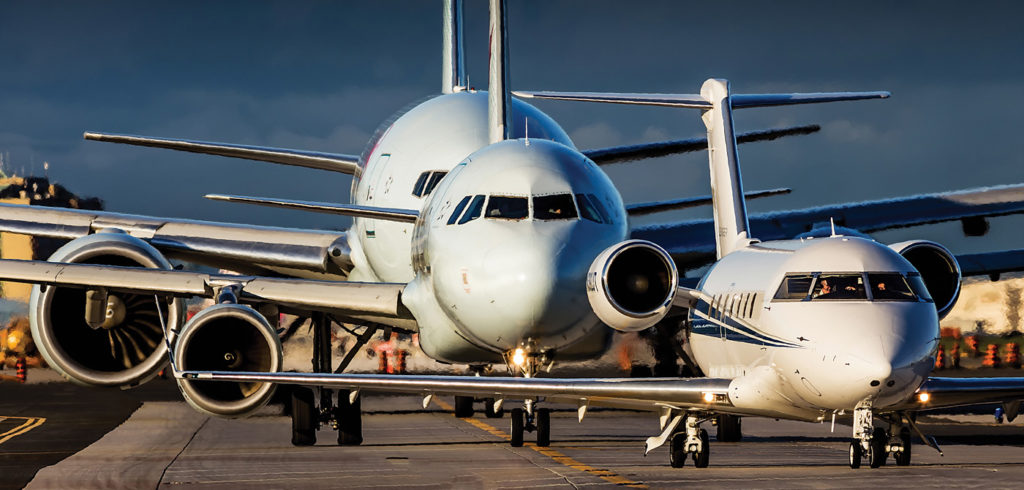
Nevertheless, the results of the report shocked many because it quantified the magnitude of the perfect storm now bearing down upon the industry.
The numbers are sobering. The CCAA predicts that by 2025, the Canadian aviation and aerospace industry will need to hire 55,000 new workers to meet growth demands and replace those who are leaving the workforce.
Canadian schools will turn out only one quarter of the needed workers, leaving about 41,000 additional employees to be recruited from other industries and outside of Canada.
Of all occupations in this country’s aviation and aerospace landscape, there are two that are predicted to feel the most acute labour shortage: pilots and aircraft maintenance engineers.
Shortly after the CCAA study was released, the Skies team decided to embark upon the first comprehensive Canadian Pilot Compensation Survey in decades.
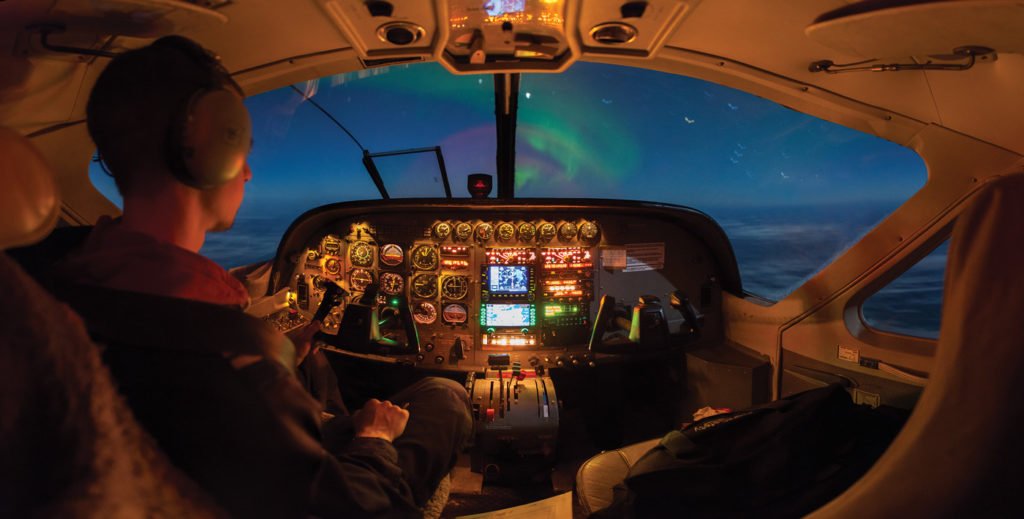
Our goal was to find out what existing Canadian pilots are thinking. Are they happy with their jobs, or are they looking elsewhere? How much money do they make and do wages vary by region? What other perks have they received over the past year?
We also wanted to know if their employers are currently hiring and if they have taken any other measures to deal with the pilot shortage.
Finally, what matters most to Canadian pilots? Is it work/life balance, or perhaps access to the latest aircraft and equipment? Is it a company’s maintenance and safety culture? Or does money talk the loudest when it comes to hiring (and retaining) today’s pilots?
Our survey was promoted on Skies‘ social media channels (Facebook, Twitter and Instagram), emailed three times to more than 33,000 people on our mailing list, and advertised on the website avcanada.ca. In addition, we ran ads in our print magazine and posted links in our Skies Daily News e-newsletter.
Responses were collected and evaluated by PMG Intelligence, an independent third-party market research and data intelligence company in Waterloo, Ont.
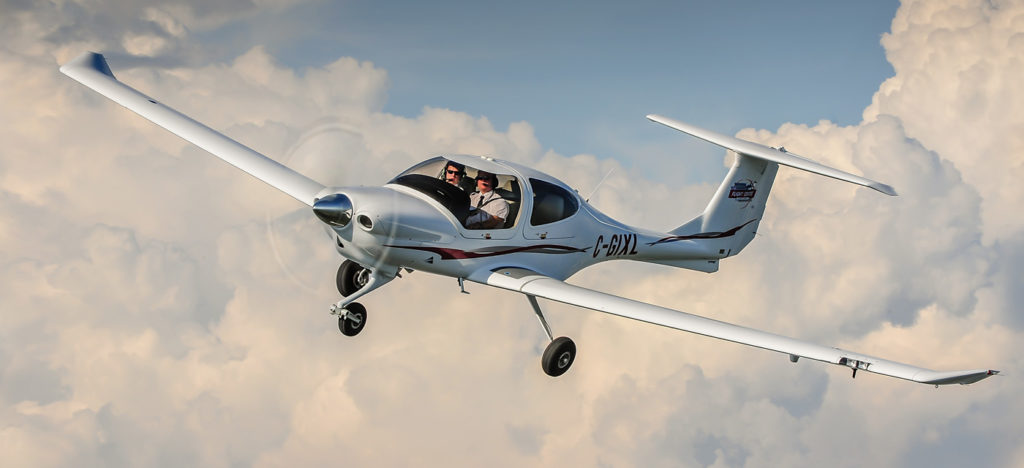
We were absolutely thrilled with the response! A total of 1,204 pilots participated in the survey, completing the questionnaire between Sept. 17 and Oct. 17, 2018. In order to qualify for the survey, pilots needed to hold a Canadian commercial licence or higher and be currently employed as a pilot.
One respondent chosen at random by PMG Intelligence received a $100 Visa gift card for completing the survey. Chris Murphy of Niverville, Man., was our lucky winner. Congrats, Chris!
Drum roll, please…
In an industry where operators are already competing hard for available talent, the 2018 Skies Pilot Compensation Survey delivers valuable insight into the minds of today’s pilots. This information will help employers attract–and also retain–pilots in the years to come.
So without further ado, let’s take a look at our survey results.
Who responded?
Of our 1,204 respondents, 88 per cent fly fixed-wing aircraft and 10 per cent helicopters, with just one per cent qualified to fly both. (Numbers were rounded and may not add up to exactly 100 per cent.)

In the fixed-wing category, 62 per cent of respondents said they hold a Canadian airline transport pilot licence (ATPL).
On the rotary side, four per cent of respondents hold an ATPL.
The majority of respondents (80 per cent) said their primary job title was simply “pilot.” Most (35 per cent) fly commercial airliners, with 25 per cent piloting twin-engine turboprop aircraft. The rest of the responses fall into various other type categories.
Nearly half of all respondents (48 per cent) have earned a college diploma, while 27 per cent and 22 per cent reported having a high school diploma and a bachelor’s degree, respectively.
Let’s talk money and benefits
Not surprisingly, as a pilot builds hours in his or her logbook, their salary climbs as well.

Our survey revealed a gradually increasing income curve for Canadian pilots. On the low end, 82 per cent of those with 200 to 500 hours experience earned less than $50,000 per year.
Salaries increase gradually with experience. Seventy-one per cent of respondents with 3,001 to 5,000 hours are earning between $50,000 and $100,000 annually, while 78 per cent of those with 10,000-plus hours earn in excess of $100,000.
Over the past year, 36 per cent of respondents reported receiving a pay raise. This trend was relatively consistent across company size.
But money isn’t the only thing keeping today’s pilots in their jobs. Other factors, such as work/life balance, health benefits, RRSP plans, and maintenance culture were cited as key considerations.
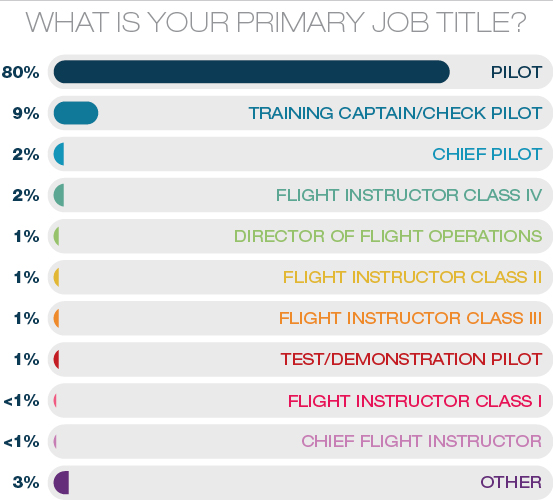
As the number of pilots working at a company increases, so does the likelihood of that organization offering RRSP savings/matching programs or additional benefits and/or compensation. As salaries increase, so does the likelihood of pilots receiving additional perks.
For example, 31 per cent reported receiving retirement savings or an RRSP matching plan, while 20 per cent received a bonus in the last year.
The data also indicate that companies currently hiring pilots were more likely to offer retention programs to their existing pilots over the past year.
However, while an overall 36 per cent of our respondents received a pay raise in the last 12 months, a corresponding 36 per cent received no additional benefits or compensation in the same time period.
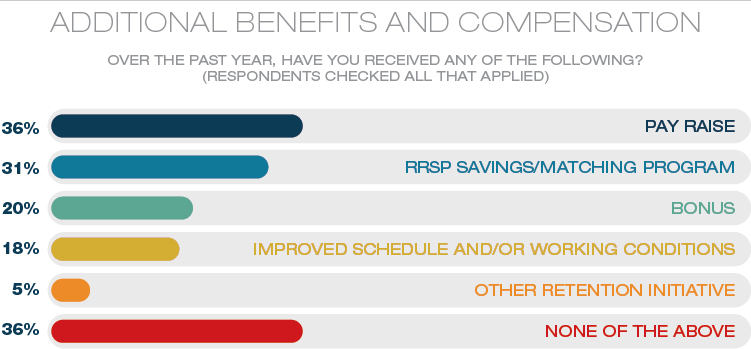
When it comes to health benefits, 86 per cent of pilots surveyed said they were covered by a work plan. The numbers were fairly consistent across the country, ranging from 86 per cent in the West to 90 per cent in Ontario and 82 per cent in the East. The Territories had the lowest percentage of employers offering health care plans at 69 per cent.
Retirement savings/matching programs are more prevalent in Ontario (71 per cent) and Quebec (72 per cent), while the Territories, Central and Western Canada average 57 per cent.
Of those pilots who do have an RRSP program of some type, 40 per cent said they were looking for another job. However, 55 per cent of respondents who do not currently have an RRSP program are looking elsewhere for employment.
Help wanted
We asked our 1,204 respondents if their companies are currently hiring pilots. A resounding 81 per cent said yes, while only 12 per cent said no and 7 per cent were unsure. It appears that operators in Ontario, Quebec and Central Canada are doing the most hiring.
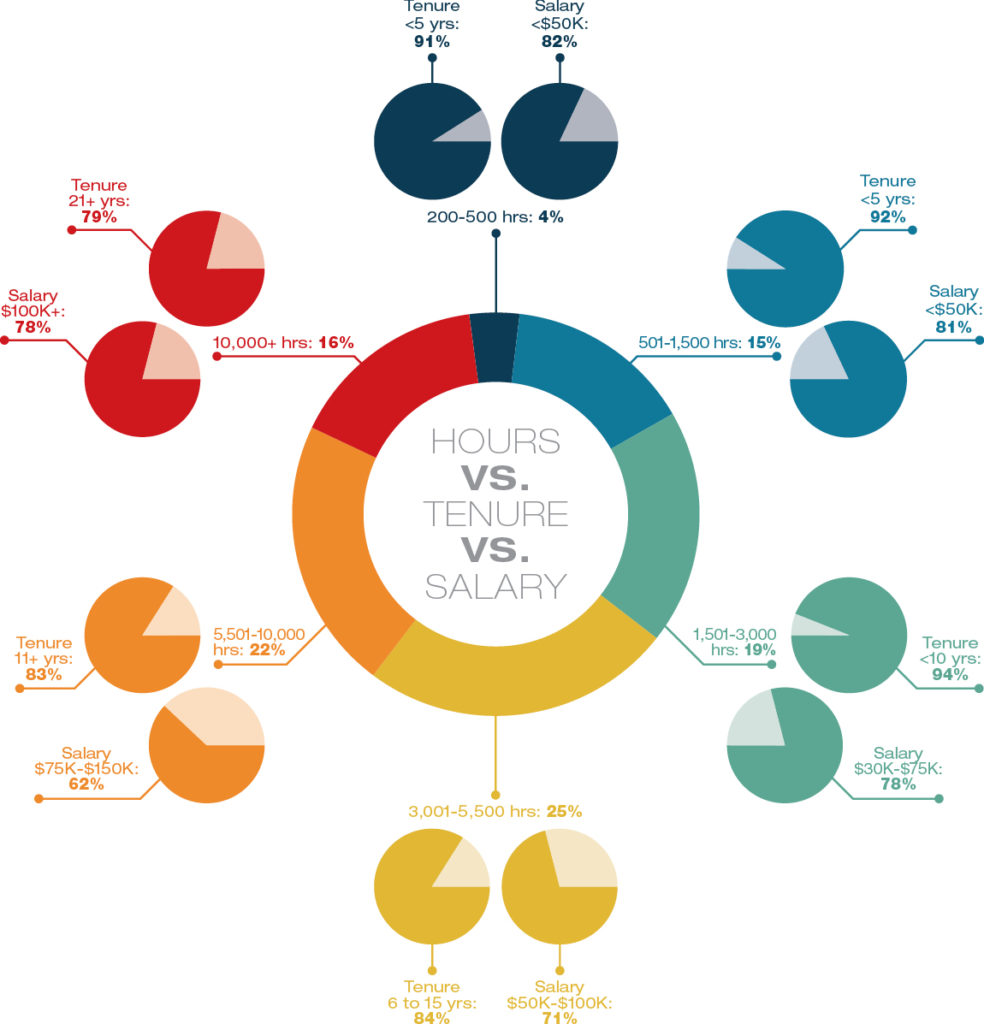
Companies are dealing with the pilot shortage in a few different ways.
Seventy-five per cent of fixed-wing pilots surveyed said their company has lowered the qualification threshold for new candidates, but only 27 per cent of their rotary-wing counterparts said the same thing. Trends indicate that the larger the company, the more the qualification minimums have been reduced. On the flip side, pilots at smaller operations were more likely to indicate their employer is doing nothing or is unaware of the pilot shortage.
Pilots surveyed told us that two things matter most when it comes to their job satisfaction: salary and benefits, and a schedule that permits work/life balance.
Of a number of other factors presented to survey participants, those ranking less important (in order from least to more important) were age of aircraft fleet and equipment; learning and career development opportunities; a positive work environment, job security and maintenance and safety culture.
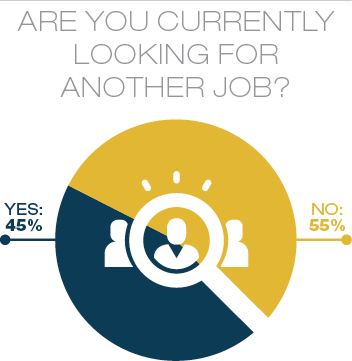
Roughly half of Canadian pilots surveyed (45 per cent) said they were looking for another job. The remaining 55 per cent were not looking to change at the time of the survey. Pilots in Central Canada are most likely to be looking for another opportunity.
Overall, the 2018 Skies Canadian Pilot Compensation Survey revealed several illuminating industry facts. The predominant message is that money and schedules are high on the priority list, and nearly half of pilots are currently looking for a better job offer.
It’s a good time for operators to review their pay and benefits packages to ensure they attract–and retain–their share of our very limited pilot supply. If the CCAA predictions are even close to reality, the competition for talent is only starting to heat up.
Skies 2018 Canadian Pilot Compensation Survey results from MHM Media on Vimeo.
Interested in knowing more? Complete survey results are available for purchase. Contact Tim Muise, tim@mhmpub.com or (519) 748-1591.


If there is such a shortage of AMEs, then why didn’t you survey that sector too??? Again we’re second fiddle…
Now that you have looked at the pilots take a good look
at the AME shortages
Couldn’t agree with Barry more. I thought “Nobody surveyed me!” As an Aircraft Maintenance Engineer with over 40 years experience and licenced in three countries (Avionics and general maintenance/modification) I can state with certainty that pilots are closer to becoming redundant as a result of automation, than are qualified maintenance providers. Aircraft do not leave the ground unless and until we sign them off as airworthy.
Companies have always considered AME’s as grease monkeys and just a requirement to keep the A/C flying and not as dangerous as the pilots requirement to handle the flight.
To become an AME you have to serve at least three (3) years as an apprentice or go to tech school before you can write your licence to certify an aircraft for flight.
Pilot can get a commercial licence in eighteen months or less and fly any aircraft he has been checked out on.
INMHO an AME is far more important with today’s complicated aircraft and system’s than pilots.